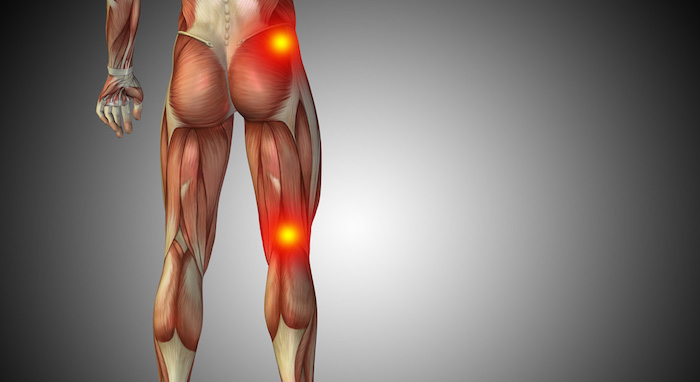
When red-hot sciatica pain sears down your leg, using ice therapy can be uniquely effective in immediately soothing the pain.
The key is to know when and how to use ice therapy for the best results:
Use Ice Therapy as Soon as Your Pain Starts
Ice or cold therapy is recommended when your sciatica is acute or flares up. Cold therapy typically works by:
- Increasing your tolerance to pain and slowing down the speed at which your nerves send pain signals to the brain
- Acting locally, as opposed to taking oral pain-relieving medications, which have a body-wide (systemic) effect
The application of cold directly affects your body tissues, providing more effective pain control.
How Ice Therapy Reduces Sciatica Pain
When you use ice therapy, the following changes occur in your sore tissues:
- Lessens pain. Cold therapy reduces pain by decreasing the conduction of nerves of the skin.
- Numbs the area. The reduction in tissue temperature causes a numbing effect due to the constriction of blood vessels and a decrease in blood flow.
- Reduces muscle spasm. Cold therapy decreases muscle spasm, which usually creates pain, by cooling the muscle fibers.
- Decreases inflammation. Lowering the tissue temperature causes a decrease in tissue metabolism and oxygen intake, reducing the overall inflammatory process.
- Prevents swelling. Reduction in inflammation results in decreased fluid collection and swelling.
Ice therapy can provide effective pain relief when used in acute conditions and may also help prevent the need to take pain-relieving medications.
Apply the Icepack to Your Lower Back
Sciatica is caused by an underlying lower back condition. The lower back problem typically pinches or irritates one (or more) of your sciatic nerve roots, which in turn sends pain and other symptoms along your long sciatic nerve.
When you use ice therapy for sciatica pain, apply the icepack to your lower back and rear pelvis where the sciatic nerve roots are located. Icing this area, rather than your thigh or calf where the pain may be more, will help control and numb the pain at its origin and also calm the nearby nerves.
Tips to Use Ice Therapy
Useful tips and methods to use ice/cold therapy for your sciatica symptoms while at home or on-the-go are:
- Find a cooling source at home. You can use crushed ice, a frozen water bottle, a bag of frozen vegetables, or a home-made gel pack.
- Try an ice massage. An ice massage is the application of ice directly on the affected area in a circular motion. You can make a hand-held ice unit by freezing water in a paper cup and cutting the top half of the cup to expose the ice (like a popsicle).
- Keep an ice pack in your car and at work. Consider keeping a disposable (instant) ice pack in your car and at the office. Through a chemical reaction, these packs produce cold on-demand, and they can help you find quick relief when you need it the most.
A useful tip while using ice therapy is to alternate it with heat therapy. After your acute pain has subsided, you can then begin applying heat therapy. Heat provides a soothing, healing effect and also helps reduce pain.
Precautions While Using Cold Therapy
Overuse or an extended duration of cooling therapy may lead to skin damage, such as frostbite and/or damage to the superficial nerves (neuropathy). General precautions to be taken during the application of cold therapy include:
- Check the duration. Apply the ice pack (or another cooling source) on the affected area for 15 to 20 minutes at a time with a 2-hour break before the next application.
- Put on a barrier. Protect your skin by placing a cloth or other protective barrier between yourself and the source of cold.
- Use ice massage sparingly. While performing an ice massage directly on your skin, avoid the bony protrusions of the spine and stop as soon as numbness is felt (3 to 6 minutes). Repeat only after the numbness wears off completely and avoid several repetitions of this treatment.
Ice therapy can provide immediate and meaningful relief to your sciatica pain. Ice therapy is particularly useful in acute pain, a flare-up of chronic pain, and/or activity or exercise-induced pain. Follow these guidelines to safely use ice therapy for your sciatica symptoms. Consider performing simple lower back (lumbar) stretches and exercises when your pain subsides to help strengthen your lumbar tissues and prevent a recurrence of sciatica.
Precision Pain Care and Rehabilitation has two convenient locations in Richmond Hill – Queens and New Hyde Park – Long Island. Call the Richmond Hill office at (718) 215-1888, or (516) 419-4480 for the Long Island office, to arrange an appointment with our Interventional Pain Management Specialist, Dr. Jeffrey Chacko.













